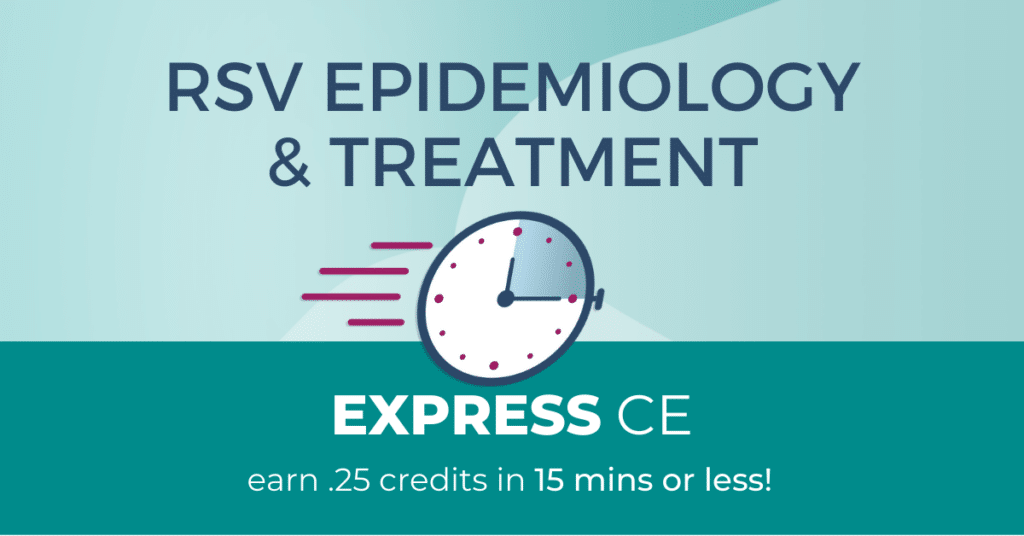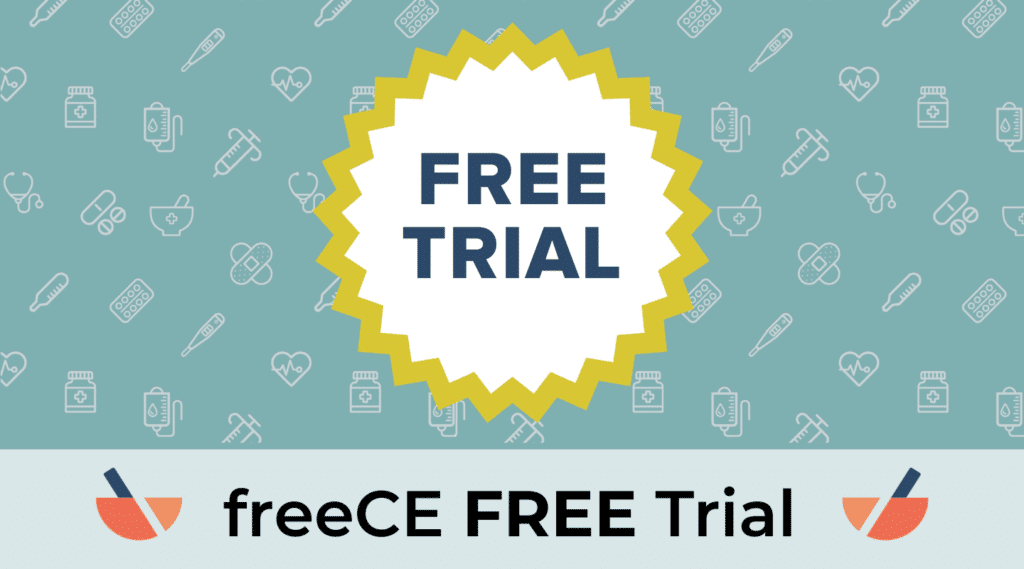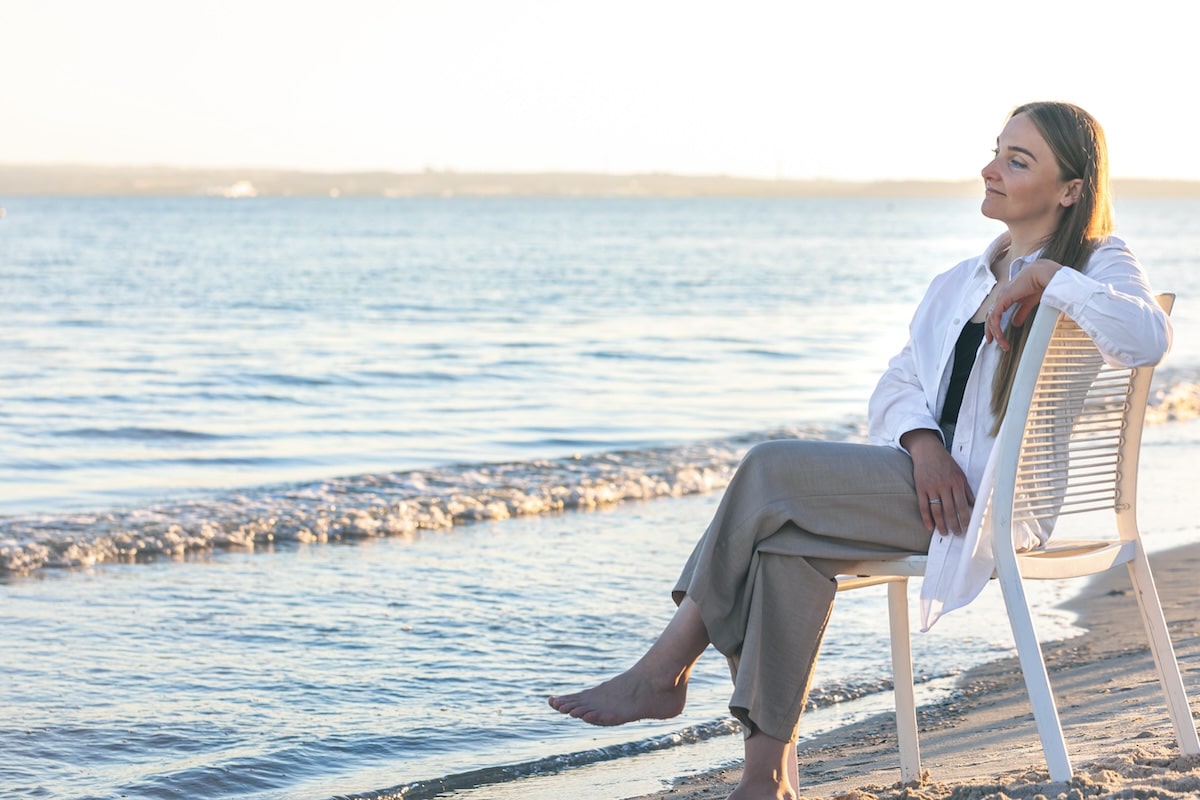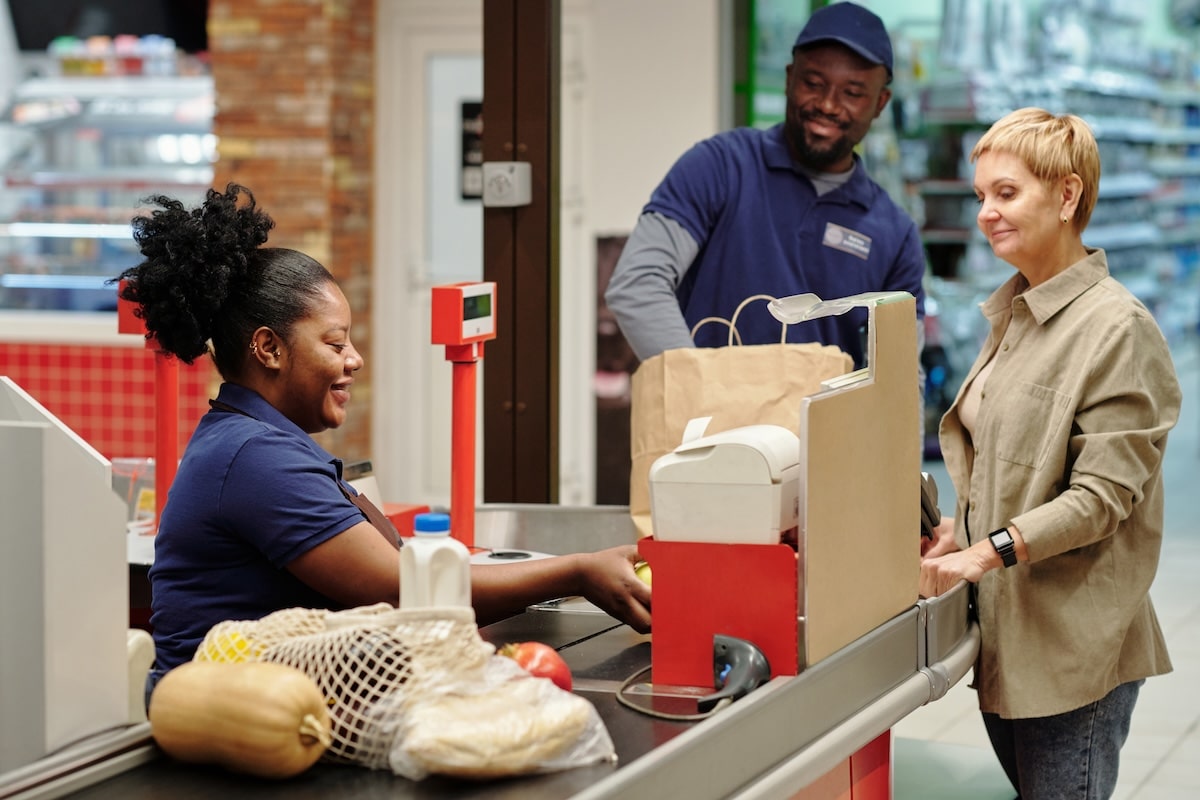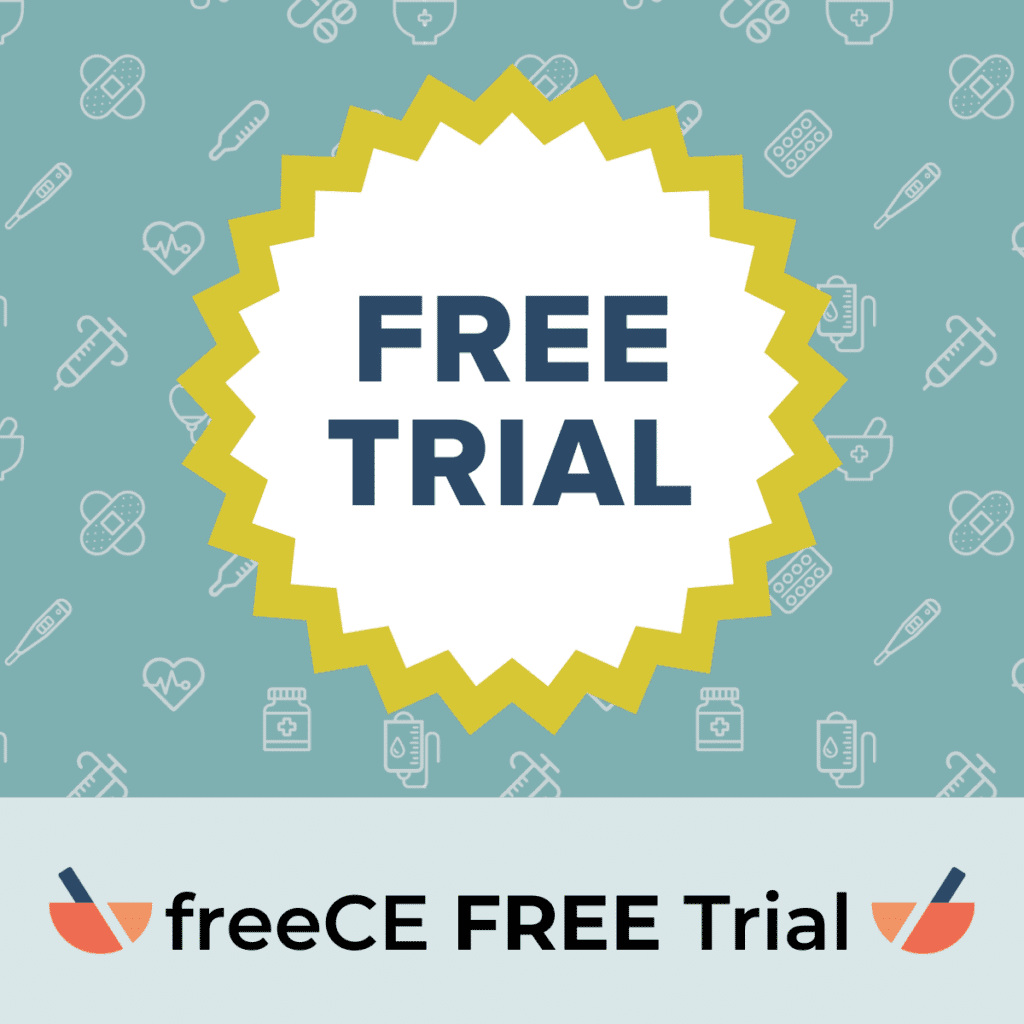Welcome to another MicroCE addition from Professor Pete. After reading this article, make sure to see our Glaucoma, mumps and rubella, and ear infections article. freeCE is committed to providing world-class continuing education for pharmacists.
Table of Contents
Overview of RSV
Pete Kreckel, microCE, 0.25 hours
My sister Mary, is a top flight pediatric nurse with over 40 years of practice. She has staffed pediatric wards, pediatrician’s offices and served as a school nurse. Her entire career has been devoted to the care of the little ones. I spoke with her on the phone and she was telling me that she has never seen so many RSV cases so early on.
She spent the last week helping family members deal with RSV cases. Good nursing care kept the little ones out of the hospital. She also noticed that the kids that had it all reacted differently, with the youngest having the most respiratory distress. Since not everyone has access to a private duty pediatric nurse like Mary, the hospital pediatric wards and ER’s are busting at the seams. Like me, Mary cannot wait for the RSV vaccines to become widely available.
RSV (does it stand for REALLY SCARY VIRUS??)
In our corner of the world respiratory syncytial virus RSV rears its ugly head from October through April, with the peak occurring in January and February. RSV seems to have gotten an early start this year as many of the pediatric hospitals are loaded with kids with this disease. It is believed that this large resurgence is due to previous COVID precautions decreasing its spread. The number of cases in 2022 are DOUBLE of those in 2021.
RSV is a single-stranded, large enveloped negative-sense ribonucleic acid (RNA) virus and a member of the Pneumoviridae family. These viruses are seen in mammalian species, and are spread by respiratory droplets. The virus can survive on hard surfaces like crib rails, doorknobs, and tables for many hours.
Kids & RSV
Nearly all kids contract RSV by the time they reach the age of 5 years, with most kids having the disease before their second birthday. RSV is the most common cause of bronchiolitis (inflammation of the small airways in the lungs) and pneumonia (inflammation of the lungs) in kids under one in the US. RSV can also infect adults, but the cases are usually milder.
According to the CDC, each year in the United States, RSV leads to approximately:
- 2.1 million outpatient (non-hospitalization) visits among children younger than 5 years old.
- 58,000-80,000 hospitalizations among children younger than 5 years old.
- 60,000-120,000 hospitalizations among adults 65 years and older.
- 6,000-10,000 deaths among adults 65 years and older.
- 100–300 deaths in children younger than 5 years old.
How Soon Do Symptoms Appear?
Symptoms occur rapidly after infection occurs, usually within 4-6 days of exposure. Symptoms of RSV infection usually include:
- Runny nose
- Decrease in appetite
- Coughing
- Sneezing
- Fever
- Wheezing
Treatment for Children W/ RSV:
Manage pain and fever with over-the-counter pain and fever reducers, such as acetaminophen or ibuprofen. Never give aspirin to children due to the potential with Reyes syndrome.
Ibuprofen:
- Do not use ibuprofen in children less than 6 months of age.
- Dose is 4-10mg/kg every six hours. Some sources say use 5mg/kg for mild fever and 10mg/kg for high fever.
Acetaminophen
- Acetaminophen is usually dosed at 10-15mg/kg every 4-6 hours with a maximum of 5 doses per day. Some clinicians use the shortcut of 5mg per pound.
Hydrate!
Hydration: Drink lots of water to prevent dehydration. Pedialyte is also a good option to replace electrolytes.
Consult your doctor or pharmacist to select appropriate over the counter medications for management of symptoms.
VACCINES:
RSV vaccine has been slow to come to market because of its history. In 1966, infants and toddlers immunized with a formalin-inactivated vaccine against respiratory syncytial virus (RSV) experienced an enhanced form of RSV disease characterized by high fever, bronchopneumonia, and wheezing when they became infected with wild-type virus in the community.
Eighty percent of the kids were hospitalized, and two immunized toddlers died upon infection with wild-type RSV. Now that we have a better understanding of the immune system, this tragedy should not be repeated.
CodaVax-RSV (by Codagenix)
- CodaVax™-RSV, an intranasal, live-attenuated vaccine candidate, for the prevention of RSV.
- On November 7,2022 the FDA announced the beginning of Phase-1 trials for an RSV vaccine by Codagenix, which will begin in 2023 after the RSV season. After Phase-1 trial, the Phase 2 dose confirming study will explore efficacy during the RSV season in 2023-2024.
- The age group to be tested is age 6 months through 5 years.
RSVpreF® (by Pfizer)
- Mom gets the vaccine to protect the newborn and can synthesize antibodies and passively transfer them to the fetus via placenta. Pfizer’s RSV vaccine candidate could be the first maternal vaccine available to help prevent this common and potentially life-threatening respiratory illness in young infants.
- Vaccine efficacy of 81.8% was observed against severe medically attended lower respiratory tract illness due to RSV in infants from birth through the first 90 days of life with high efficacy of 69.4% demonstrated through the first six months of life
- The RSVpreF investigational vaccine was well-tolerated with no safety concerns for both vaccinated individuals and their newborns
- On March 2, 2022, Pfizer announced that its vaccine candidate received Breakthrough Therapy Designation from the FDA for the prevention of RSV-associated lower respiratory tract disease in infants up to six months of age by active immunization of pregnant women.
- Read the press release at: https://www.pfizer.com/news/press-release/press-release-detail/pfizer-announces-positive-top-line-data-phase-3-global
AVOIDING RSV:
- Don’t share cups or utensils (especially if they have mild cold symptoms)
- Don’t touch your face (eyes nose an mouth) after touching potentially infected surfaces.
- Wash hands often
- Frequently disinfect “high touch” surfaces like door knobs, table surfaces and toys.
The understanding we will have, thanks to Dr. Kendsersky, is most appreciated by the readers of this column.
Synagis for RSV prevention
RSV was discovered in 1956, but took until 1998 to get a monoclonal antibody to prevent the disease. Last week we discussed two vaccines that are being studied, one that will be given intranasally (Coda-VAX-RSV®) and RSVpreF® (by Pfizer) which is given to the mother while pregnant.
SYNAGIS ® (palivizumab) injection (Approved 1998)
Is available in 50 mg and 100 mg for intramuscular injection used to help prevent a serious lung disease caused by respiratory syncytial virus (RSV) in children:
- born prematurely (at or before 35 weeks) and who are 6 months of age or less at the beginning of RSV season
- who have a chronic lung condition, called bronchopulmonary dysplasia (BPD), that needed medical treatment within the last 6 months, and who are 24 months of age or less at the beginning of RSV season
- born with certain types of heart disease and who are 24 months of age or less at the beginning of RSV season
DOSAGE: given at 15mg/kg at first visit, and given monthly thereafter. The first dose should be given prior to the commencement of RSV season and given monthly throughout.
NON-PHARMACOLOGICAL PREVENTION MEASURES
- Hand washing in all settings, particularly when high-risk infants are at risk for exposure to respiratory infections from older siblings
- Practicing cough hygiene – cover mouth, cough into elbow, dispose of tissues immediately.
- Avoid exposure to combustible tobacco
- If possible, avoid daycare during RSV season.
WHAT ABOUT GRANDPA AND GRANDMA?
Adults who get infected with RSV may be asymptomatic or have mild symptoms. Symptoms include rhinorrhea, pharyngitis, cough, headache, fatigue, and fever. Disease usually lasts less than five days.
Some adults, however, may have more severe symptoms consistent with a lower respiratory tract infection, such as pneumonia.
High Risk elderly include:
- Age 65 years and older
- Adults with chronic lung or heart disease
- Adults with weakened immune systems
RSV in the elderly may exacerbate:
- Asthma
- Chronic obstructive pulmonary disease (COPD)
- Congestive heart failure
Although these symptoms sound rather generalized, there are tests that can help with the diagnosis with RSV:
- Reverse transcriptase-polymerase chain reaction (rRT-PCR), which is more sensitive than culture and antigen testing. This is the best option for older patients (children and adults)
- Antigen testing, which is highly sensitive in children but not sensitive in adults. Is 80-90% accurate in the children.
There is a lot of information on-line about this drug, but I am most fortunate to be able to consult a pediatric hospital pharmacist. After last week’s column on RSV, Dr. Rebecca Wytiaz Kendsersky, PharmD reached out to me and offered to help me discuss Synagis® which as a community pharmacist, I have had no experience with. “Becca” did a residency in pediatric pharmacy and currently works at Children’s Hospital of Philadelphia.
Here are her comments:
Ah yes, Synagis definitely has a special pocket in the pediatrics world 🙂 Happy to share more info!
- Date range: typical “RSV / Synagis season” is November to March, however the past two years have thrown us for a loop so we’ve started seeing RSV cases as early as August . Because Synagis is a bit expensive (see below), we limit dispensing in the hospital to only during “Synagis season” which this year, we deemed to begin in September and will likely go through (at least) March pending the RSV trends in the area and nation.
- Of note, patients are eligible to receive up to 5 doses of monthly Synagis per year as that’s thought to cover them through the entire season … I’m curious if this recommendation will change as the season is starting earlier and earlier…
- If patients contract RSV during “Synagis season”, then they are no longer eligible to receive Synagis for the remainder of the season since the chance that they’ll be reinfected with RSV in the same season is highly unlikely.
- Cost: CHOP carries the 100 mg/mL vials, which is a ripe $3,947.86! While not the most expensive drug in the world, certainly not a small cost. Although the cost of treatment is definitely cheaper than a hospital admission!
- Administration: CHOP (and the other hospitals I’ve worked at) administer Synagis via intramuscular route for qualifying patients within 72H of discharge – a cost-savings and risk/benefit to not administer while still admitted to the hospital. CHOP limits administration to MWF so we can batch the doses prepared and also reduce costs in that way. After patients receive their doses on their way out the door from an inpatient admission, they’ll follow up with their outpatient physicians to receive subsequent IM doses during the season.
- One last point is that Synagis is not a vaccine (a common misnomer by many of our resident physicians) but rather a prophylactic IM injection. I like to avoid the “vaccine” classification just in case qualifying patients have anti-vaccine parents who may automatically reject this therapy without knowing more about it.
Have a Great Day on the Bench!!

